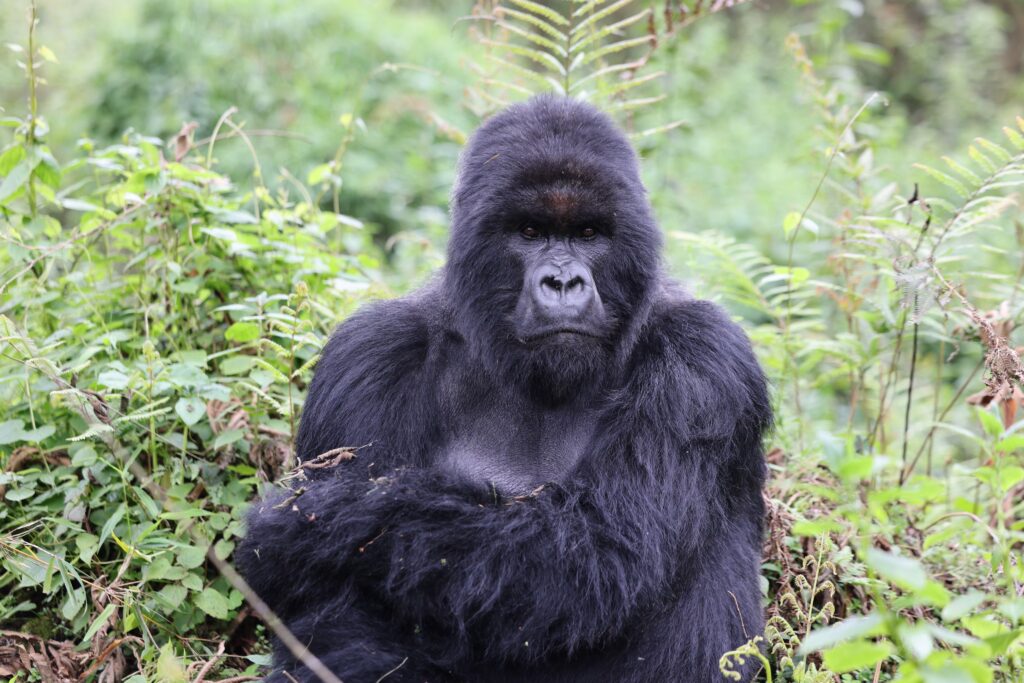Over the holiday, I had the privilege of traveling to Tanzania and Rwanda with my family. While I loved the safari and seeing all of the animals, without a doubt the highlight was trekking through the forest and hanging out with a family of gorillas. And especially our visit with a family of gorillas called Umubano which means living together in harmony.
I had expected to see the physical similarities between gorillas and humans, their fingers, toes, mannerisms, etc., but I had no idea that they could also lead like humans.
Here is the story of Charles, the great human-ish leader.

The Umubano family is led by Charles, a dominant silverback who years ago convinced twelve other gorillas to join him in forming a family that believes in other ways of solving problems. Apparently, there had been a lot of violence in his old family.
According to our guide, Jolie, here’s why the other gorillas followed Charles:
- Charles shows love and support to everyone in the family. The gorillas enjoy him and each other and feel safe.
- Charles holds the other gorillas accountable and has high expectations for how they’ll behave. He gets tough on them when they don’t behave, but they know what’s expected.
- Charles has created a culture of fun and playfulness. However, when they get a little too fun or playful, he reigns that back in.
This all sounded interesting, but the cynic in me wondered if this was something the guides said to all the tourists. I pushed a little harder and asked Jolie how she can really tell these things about Charles and his leadership, compared to the 23 other gorilla families?
Jolie said that it was extremely rare to have six silverbacks (aka elders) living together as a family. Most gorillas leave to start their own family well before they become silverbacks, but in this case they stayed—and it appears—because of Charles’ leadership.
I asked about the “succession plan” and Jolie said that as Charles starts to slow down, Silverback Two will take over and depending on his leadership style, the rest of the silverbacks could stay or they could go.
This is no different than what I see in companies all over the world.
There’s that old adage, that people don’t leave companies, they leave managers. Or leaders. Well, the opposite is also true. People stay because of their leaders.
Great leaders are supportive, but all also have high expectations and create a culture that people are drawn to.
As you go into 2025, think about what you’re doing as a leader to make your team want to stay.
And if you want some tips, check my Human Leadership course on LinkedIn Learning, which over 83,000 people have taken, or sign up to get on the waitlist for my next Great Human Leader cohort.
1/7/24

